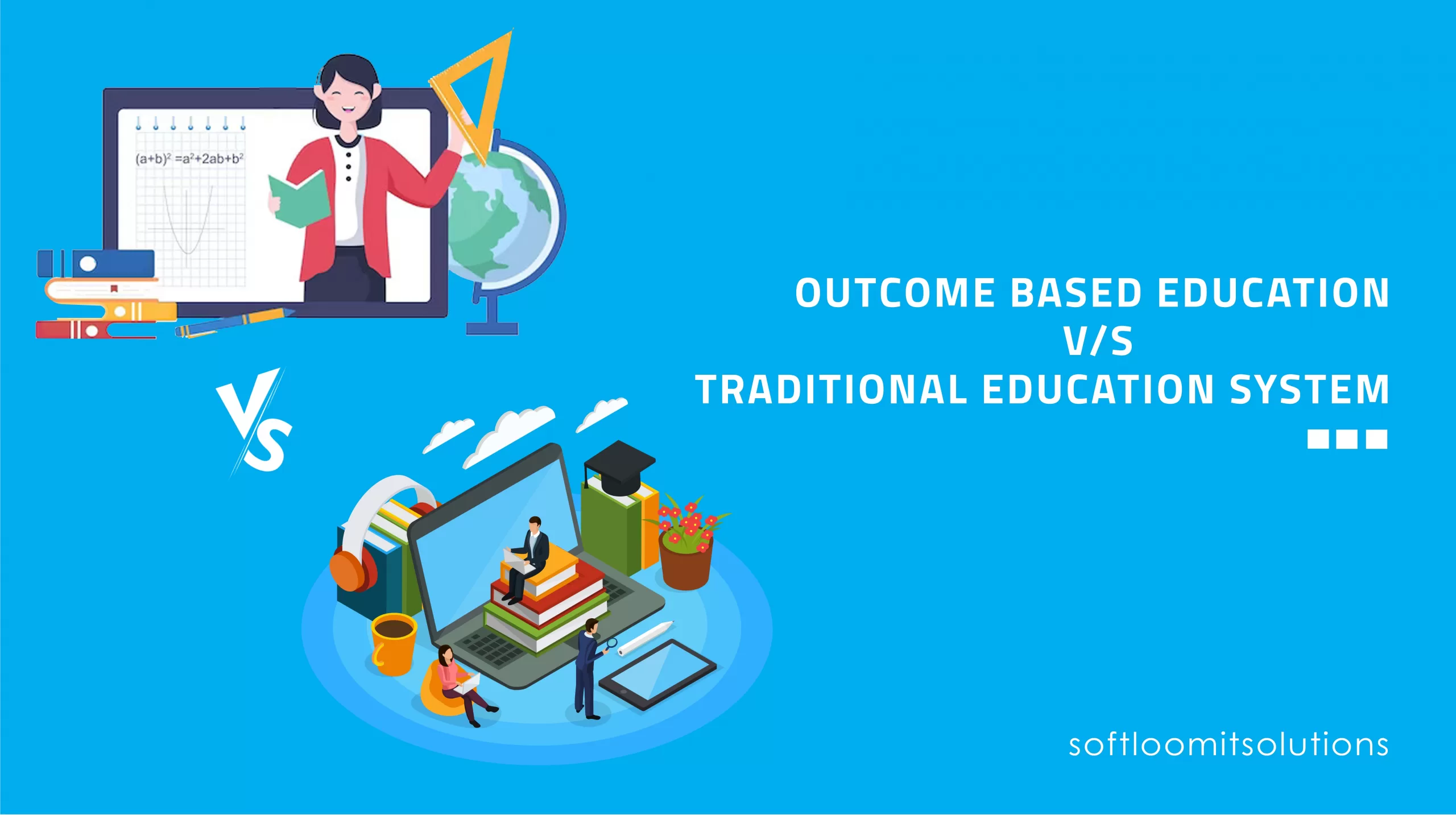In the conventional educational system, teachers and students put a lot of effort into learning each subject’s syllabus. The primary goal of the course and curriculum has been to achieve high exam grades. This approach left the pupils lacking in information or skills by the conclusion of the semester.
Additionally, this intensified the nation’s unemployment issue because many students lacked the necessary skills to meet the hiring needs of the businesses. Unemployment among students was caused by the disconnect between the curriculum and business requirements.

What Is Outcome Based Education?
“outcome-based education” focuses on the course’s outcomes in all of its components and features. Students enrol in classes with the intention of mastering a certain skill or obtaining knowledge, and they are required to do so by the end of the program.
No particular learning method or time frame exists. Learners will decide what they should learn. According to the planned result, teachers, or guides will lead the students.
Benefits of Outcome-Based Education (OBE) For Students
- clears things up for both teachers and students
- Learning is flexible and allows one to follow one’s own style.
- Different approaches for learning
- Each individual has different outcomes thus there is no way for comparison between students.
- Students are in charge of their learning.
With the educational system known as “outcome based education,” every feature of learning is structured around a set of objectives (outcomes). By the time they finish their education, students should have accomplished their objective. Students should be able to achieve their goals.
The success is determined by the results. The OBE maps and evaluates students’ progress at each stage. Through the growth of students’ knowledge and skills, the OBE model seeks to maximize learning outcomes for students.
The outcome-based education system, also known as standard-based education, has succeeded in assisting institutions in measuring their learning outcomes while also enabling students to gain new skills that will help them stand out from their peers on a global scale. This can be done with an Outcome based education software.
By steadily improving over time, these factors can help raise educational standards and assist institutions in receiving accreditation from prestigious accreditation bodies like the (National Board of Accreditation) NBA Accreditation.
On the other hand, the old educational system is very reliant on mastering theoretic concepts. The ordinary method of teaching and learning just emphasize skill memorization above skill growth.
Finally, there is hardly any opportunity for pupils to learn new skills that they can utilize to advance their jobs. Teachers in a traditional system are more concerned with finishing the curriculum within the allotted time span than they are with innovation!
Outcome Based Education System VS Traditional Education System
The main difference between outcome based education and traditional system is as follows:
-
Creating an outline and curriculum
The fundamental goal of the conventional educational system is to impart previous generations’ knowledge to the current generation of pupils.
In the traditional setting, “remodeling” and “restructuring” the norms are by no means the main objectives. They merely want students to absorb what teacher teaches and learn it.
Sincere to say, the curriculum is crucial in helping pupils have a deeper understanding of many areas.The more application produced, the more pupils will acquire fundamental abilities that will ensure a profession worth pursuing.
The OBE method uses a student-centered learning strategy to give the children more opportunities. It clearly intends to make a difference committing to excellence and innovation. The output achieved by the end of the session already set by the curriculum’s design. Teachers and K12 teachers must contribute ideas that may include a range of cutting-edge activities to help pupils achieve their goals. The curriculum must contain the specified skills required to master a subject.
-
Grading Method
Although I believe that grades do not determine a student’s destiny, I cannot deny the influence they have on one’s career! Grades matter a lot. Period. The OBE education system, in contrast to the conventional grading system, does not assign grades to students in order of “best” to “worst.”
For instance, there is no clarity of concept if students with high ranges of scores gets a “A” and students with low grades or poor achievements gets a “C” in the old approach.
These grades don’t provide precise figures, and even if they did, there would be no consideration of whether the kids had picked up any new abilities.

-
Grading is solely based on their bookish knowledge.
The situation is different under OBE. What the students have learned is the main focus of the OBE system.
Another method that assesses outcomes in terms of various “levels” is present in OBE. For instance, based on the curriculum’s components, teachers can choose from a variety of levels.
Level 1 denotes topics in algebra.
Level 2 denotes concepts that are related to skills, and so forth.
Students who pass the tests or evaluations for a given subject may receive a “level” designation.
Teachers will find it easier to pinpoint students’ academic deficiencies and strengths with the aid of this level-by-level student progress mapping.
-
Scalability Of Final Outcomes
The traditional educational model prevents institutions from identifying the elements that acted as a stimulus for their development.
Besides, the teachers could infer that the inclusion of specific elements, such as hosting guest speakers, has greatly aided their improvement. For instance, if the institution has 100 students who completed the exam this year, compared to the previous year’s total of 70, they may analyze the figures and draw the conclusion that the reason the percentage of students passing the exam has increased may be because of holding guest lectures.
Again, the main difference between outcome based education versus traditional system is that, in Outcome based education system, every student’s progress can be monitored based on their performance and differential growth at different levels or stages, which also complies with the educational standards established by National Education Policy NEP 2020.
Teachers can even be certain of variables that have contributed to their improvement based on the final outcome sheet. Thanks to the mapping of PO-CO, best-suited assessments, and question-wise outcome computation. In addition, the OBE software also enables users to provide error-free CO-PO mapping reports for students’ yearly achievements, student-wise achievements, course-level achievements, etc.
Such a teaching-learning method increases the likelihood of receiving accreditation from the National Board of Accreditation (NBA) and allowing students access to high-quality education.






